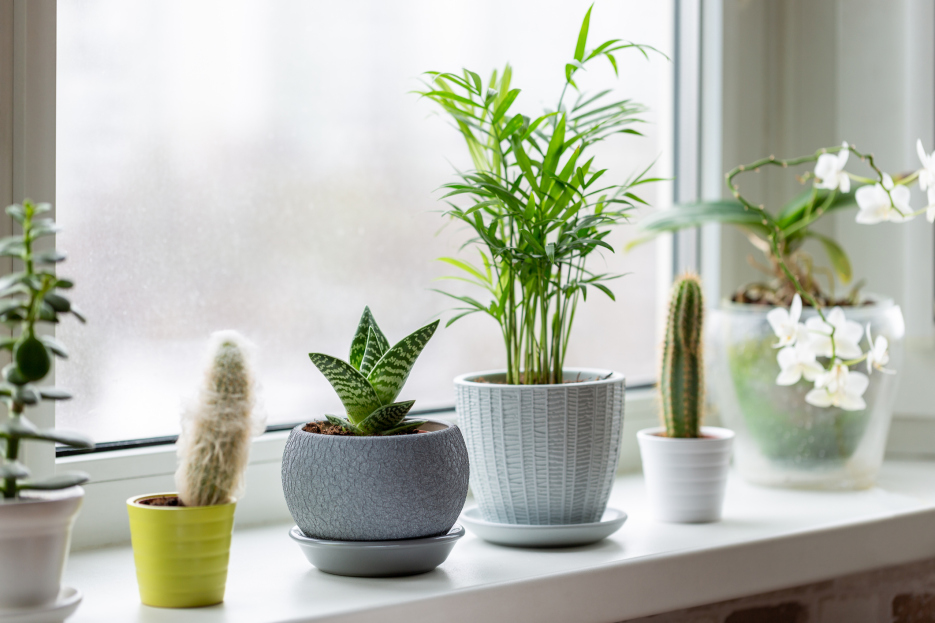
During the winter, all plants go dormant. Dormancy is like a deep sleep for plants. It is a state of hibernation where plants rest and conserve their energy. Dormant plants may require less water and fertilizer than normal. Some plants, like Amaryllis and Poinsettias, require periods of darkness during their growth cycles to help them regenerate and rebloom.
Dormancy can be triggered by stress (extreme heat or drought) but is typically a reaction to the darker and cooler days during the winter months. Most houseplants are tropical and go dormant during the winter; however, some varieties like aloes, crassula and haworthia are considered “summer dormant” and grow better during the winter. Other plants like ZZ’s and pothos may have unpredictable dormancy periods. Also, plants like Sansevieria (Snake plants) that thrive in low light conditions may not show the same signs of dormancy, as they continue to put out new growth during the winter. Signs of dormancy include dropping leaves, slower growth, and less water absorption (requiring less water).
The winter months are darker, and the shorter days limit our access to sunlight. It is important to maximize the amount of light reaching your plants during this season. If you feel that your plants are not receiving the proper amount of sunlight, then you may need to move them to a different location like a south or east facing window where they will receive more light.
During the winter months, a plant’s growth rate may slow down considerably. Overwatering your plants can lead to root rot - especially during winter. You may have to adjust the frequency and how much water you give your plants. Checking the moisture level of your soil is still the best way to determine if your plant needs water.
Check the moisture level of your soil frequently to keep up with your plant’s needs. Using your finger, you can check the soil by pushing down on the top of the soil to see if it feels moist or dry. If the top few inches of soil feel dry to the touch, you can give your plant some water. Be sure to use room temperature water and ensure that no water sits at the bottom of the pot after watering, as this can quickly lead to root rot and cause your plant to die. Also check your soil for any pests, mold or irregularities. Since your plant is getting less sunlight, less warmth and different conditions, you may have to move your plant to a sunnier location if you notice any pests, mold or notice that your plant’s soil always seems to be wet.
During the winter months many homes are very dry with very little humidity. Grouping your plants together can help boost humidity in that area. You can also set up a humidifier to help raise the humidity levels for your plants or mist your plants by hand with a spray bottle.
Being conscious of where your plant is placed during the winter is also equally as important . Move plants away from any windows with drafts or iced- over windowpanes, as cold temperatures can radiate off the glass and cause your plant to deteriorate. It is also important to keep them away from any heating sources such as central heating ducts, space heaters and fireplaces. The temperature you should try to keep most foliage plants at is about 65–75°F (18-23°C) during the day, and no lower than 55°F (12°C) at night.
Winter is when pests and other insects like to pop up on your plants. Spider mites, aphids and scales are the most common indoor houseplant pests. It is important that you catch them early enough and address the issue before it spreads.
It is also important to keep your plants’ foliage and leaves clean and pruned. If you notice any dried up or damaged leaves, prune them off to allow your plant to direct its energy back into the healthy part of the plant. Also be sure to clean your plants’ leaves of any dirt, dust, or water stains, and inspect them for any pests or insects. This is important because dust covered, or dirty leaves can inhibit a plant’s ability to absorb sunlight.
Follow the above guide to help adjust your plant to the winter season!